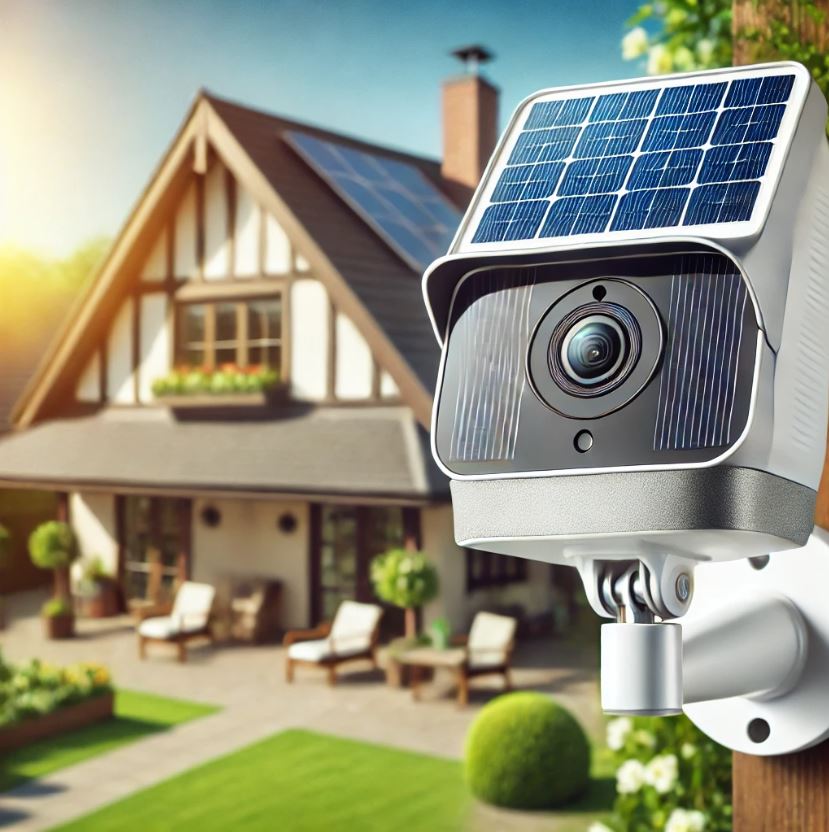Solar Security Camera Wireless: The Ultimate Guide
Introduction
Security cameras play a crucial role in protecting your property and ensuring the safety of your loved ones. With the advancement of technology, solar-powered wireless security cameras have emerged as a reliable and eco-friendly alternative to traditional cameras. This guide will delve into the various benefits, features, and models of solar security cameras, along with a comprehensive installation guide.
What is a Solar Security Camera?
A solar security camera is a surveillance device that harnesses solar energy to operate. Unlike traditional security cameras, which rely on electrical power, solar cameras are equipped with solar panels that convert sunlight into energy. This makes them an excellent choice for locations where running power cables might be challenging.
Advantages of Solar Security Cameras
- Environmentally friendly: Reduces carbon footprint by using renewable energy.
- Cost savings: Eliminates electricity costs associated with running security cameras.
- Easy installation: No need for complicated wiring or hiring an electrician.
- Reliable power source: Continues to operate during power outages.
Key Features to Look for in Solar Security Cameras
When choosing a solar security camera, consider the following features:
- Camera resolution: Higher resolution provides clearer images.
- Night vision capabilities: Essential for monitoring in low-light conditions.
- Motion detection: Alerts you to any movement within the camera's range.
- Storage options: Decide between cloud storage or local storage on an SD card.
- Connectivity options: WiFi and 4G SIM options for flexible connectivity.
How Solar Security Cameras Work
Solar security cameras operate using the following components:
- Solar panel: Captures sunlight and converts it into electrical energy.
- Battery storage: Stores excess energy for use during nighttime or cloudy days.
- Wireless connectivity: Transmits data to your device via WiFi or 4G SIM card.
Installation and Setup
Follow these steps to install and set up your solar security camera:
- Choose an optimal location with maximum sunlight exposure.
- Mount the solar panel securely to ensure it captures enough sunlight.
- Connect the camera to the solar panel and secure it in place.
- Configure the wireless connection using the camera's app or web interface.
- Test the camera to ensure it functions correctly.
Top Solar Security Camera Models
Here are some of the best solar security cameras available:
- F20 - 4MP 1080P 4X Digital Zoom - Wifi 2.4g or 4G Sim Card
- Y5 - 8MP 4K 10X Optical Zoom Solar Camera - 4G SIM or WIFI 2.4g
- SC11 - 2MP 3x Digital Zoom Solar Camera - 4G SIM or WIFI 2.4g
- MG93 - 36X Optical Zoom - 8MP Solar Camera - WiFi 2.4g or 4G Model
Comparing Solar Security Cameras to Traditional Cameras
When choosing between solar security cameras and traditional cameras, consider the following:
- Performance: Solar cameras are highly reliable and perform well even during power outages.
- Cost: Initial investment might be higher, but long-term savings on electricity bills.
- Installation: Solar cameras are easier to install with no need for electrical wiring.
- Maintenance: Minimal maintenance required compared to traditional cameras.
Common Use Cases for Solar Security Cameras
Solar security cameras are ideal for various applications, including:
- Residential properties
- Retail stores
- Warehouses
- Agricultural sites
Security Benefits of Solar Cameras
Solar security cameras offer numerous security benefits, such as:
- Continuous monitoring without power outages
- Remote access and control via mobile apps or web interfaces
- Real-time alerts and notifications for detected motion
Potential Drawbacks and How to Mitigate Them
While solar security cameras have many advantages, they also have some drawbacks:
- Initial cost: Higher upfront cost, but savings over time.
- Dependence on sunlight: Ensure proper placement for maximum sunlight exposure.
- Weather impacts: Choose weather-resistant models to withstand harsh conditions.
Future of Solar Security Cameras
The future of solar security cameras looks promising with advancements in technology:
- Improved solar panel efficiency
- Better integration with smart home systems
- Enhanced AI features for smarter surveillance

